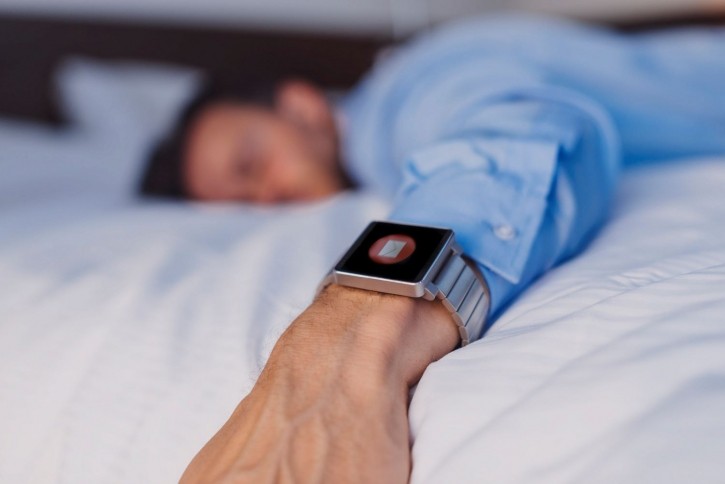Advancing sleep health: Wearable technologies revolutionize clinical trials and patient care

Her insights, captured in the white paper "Closing the Gap in Our Understanding of Sleep Health with Fit-for-Purpose Wearable Digital Health Technologies," underscore the transformative potential of wearables in providing accurate, real-world sleep data. This comprehensive understanding is essential for improving patient outcomes and supporting regulatory approvals. The white paper is available for download here.
White paper insights
LL: Can you provide an overview of your recent white paper on the role of wearable health technologies in measuring sleep health within clinical trials?
In this white paper, we explore the transformative potential of wearable health technologies for measuring sleep in clinical trials. Despite sleep's critical role in overall health, it might be surprising that assessments of participants’ sleeping patterns are underutilised in clinical trials, with only a small percentage of studies incorporating these measures, even when sleep disturbance is recognised as a significant burden for the targeted patient population. Integrating wearable devices can offer accurate, real-world data on sleep that can build a greater understanding of an individual’s condition and the impact of novel treatments.
LL: What are the key findings and recommendations from your white paper?
Key recommendations from the paper include incorporating valid, fit-for-purpose wearable devices into clinical programs that have demonstrated their ability to withstand regulatory scrutiny. These devices can capture valuable objective data on sleep quality. We advocate for devices bridging the gap between clinical research and meaningful, patient-centered sleep health metrics. This integration can enhance evidence generation, support regulatory approvals, and improve patient outcomes by offering a comprehensive view of sleep health in various conditions.
Importance of sleep tracking
LL: Why is sleep health an important factor to consider in clinical trials, especially for conditions like cardiovascular and metabolic diseases, cancer, and neurodegenerative disorders?
Sleep health is crucial in clinical trials because inadequate or disordered sleep is linked to poor health outcomes. Sleep problems are a common comorbidity of conditions such as cardiovascular and metabolic diseases, cancer, and neurodegenerative disorders. Inadequate sleep can exacerbate these conditions, increasing risks and worsening symptoms. For instance, sleep deficiency is associated with higher risks of heart disease, diabetes, and mood disorders. Including sleep assessments in clinical trials provides a more comprehensive understanding of how treatments impact overall health and can reveal important insights that can aid in managing these chronic conditions more effectively.
LL: How can better understanding and measurement of sleep health improve the outcomes of clinical trials?
Better understanding and measurement of sleep health can improve clinical trial outcomes by providing comprehensive data on how treatments impact patients' overall well-being. Accurate sleep assessments can reveal the additional effects of interventions, uncovering improvements or deteriorations in sleep that subjective reports or clinic-based questioning might miss. This objective data helps demonstrate treatment benefits, supports regulatory approvals, and ensures patient-centric care. Incorporating wearable digital health technologies enables real-world sleep monitoring, offering detailed insights into sleep patterns and disturbances, thereby enhancing the accuracy and relevance of clinical trial findings.
Wearables in clinical research
LL: Despite their popularity among consumers, why do you think the application of sleep-tracking devices in drug development and clinical research has been limited?
Clinical development is often late to technology adoption due to several factors. Clinical development takes years and thus operates with a high level of inertia. People tend to stick with established methods -- in the case of sleep research, polysomnography and subjective reports, despite their limitations being well known. In addition, clinical development typically demands a much higher level of validation than, for example, the consumer market before a novel method can be deemed fit for purpose in clinical settings. Finally, there is often a lack of awareness and understanding of the potential benefits of integrating wearable technology, which leads to slow adoption in clinical trials and drug development.
LL: What are the main challenges and barriers to the adoption of wearable health technologies in clinical trials?
Full adoption of technologies in clinical trials requires validation and regulatory acceptance, which takes considerable time and resource investment. Furthermore, validating novel wearable-derived measures requires multidisciplinary expertise across clinical and technology teams. Therefore, it is difficult for a single entity to tackle such validation challenges. We believe that private, public and pre-competitive partnerships are needed to move the needle in a scalable way, and we have launched several partnership programs.
Technological advancements
LL: How do wearables like ActiGraph’s devices generate more efficient, accurate, and meaningful data compared to traditional methods?
Wearables like ActiGraph’s devices generate more efficient, accurate, and meaningful data than traditional methods by enabling continuous, real-world sleep monitoring in patients' home environments. ActiGraph devices use multimodal sensors to capture motion, heart rate, and other physiological signals, providing detailed insights into sleep patterns and stages. This real-world data represents typical sleep behaviors and is free from recall bias associated with subjective reports. The scalability and cost-effectiveness of these wearables allow for comprehensive sleep assessments in large clinical trials, enhancing the scope for evidence generation.
LL: Can you share any specific examples or case studies where ActiGraph’s wearables have been successfully integrated into clinical trials?
ActiGraph technology has been incorporated into more than 240 industry-sponsored clinical trials – the majority of which are phase 2 and 3 trials. Bellerophon Therapeutics used ActiGraph’s technology in an FDA-registration Phase 3 trial to evaluate an inhaled treatment for pulmonary fibrosis, marking the first FDA endorsement of a wearable-derived primary endpoint. Although the trial didn’t achieve the desired treatment efficacy, ActiGraph’s solution enabled the creation of a novel digital endpoint and expedited crucial insights. The technology reduced the patient population by 50%, saving significant time and resources and providing clinically meaningful data for informed decision-making. This collaboration highlighted a substantial breakthrough in digital health technology, establishing a solid foundation for future clinical trials using digital endpoints.
Regulatory and compliance
LL: How do wearable health technologies comply with regulatory standards in clinical trials?
Regulatory bodies like the FDA and EMA have issued guidance highlighting the need for objective data collection, safety, and data integrity. The FDA's 2023 guidance on digital health technologies formalises the expectations for using digital health technologies in clinical investigations, ensuring they meet regulatory requirements for data privacy, security, and usability, thus supporting their acceptance in clinical research. The EMA has also issued a Q&A document to clarify its expectations when these technologies are used to support the approval of new treatments. Fit for purpose, research-grade devices are more likely to ensure the success of regulatory submission of data and evidence generated by wearable devices.
LL: What steps does ActiGraph take to ensure data integrity and patient privacy when using wearables in clinical research?
ActiGraph ensures data integrity and patient privacy in clinical research through comprehensive security measures that exceed regulatory compliance with GDPR and HIPAA. We implement state-of-the-art security protocols across all data handling phases, including data encryption in transit and at rest. Our dedicated cybersecurity team continuously monitors for threats, conducts regular security audits, and performs risk assessments to maintain robust security frameworks. Additionally, we invest in advanced cybersecurity technologies and provide comprehensive training programs to educate employees on best data privacy practices, ensuring patient information's confidentiality and integrity throughout the research process.
Future of digital medicine
LL: What is your vision for the future role of digital health technologies in clinical trials and drug development?
Clinical development productivity has been declining due to climbing costs and complexity. We strongly believe this situation can be improved with the high-quality data and advanced analytics digital health technologies enable. Wearable technology provides continuous, accurate monitoring of key health metrics, including sleep, with minimal patient burden. This will not only facilitate more patient-centered trials and enhance trial diversity but also holds great potential to enable faster decision-making in clinical development and to bring the right treatments to the right patients.
ActiGraph’s strategy and innovations
LL: As the leader of the clinical and data science team at ActiGraph, what are your strategic priorities for advancing the use of wearables in clinical research?
We believe partnership is essential for overcoming the validation gaps and effectively aligning with the regulators. As discussed above, we have launched several private-public and pre-competitive partnership programs to bridge the evidence gap for digital innovations. In the DECODE initiative we launched last year, we are working with interdisciplinary teams from leading pharmaceutical companies to validate the use of wearables to objectively quantify sleep and scratch behaviours in patients with itchy skin conditions. This collaborative effort aims to integrate wearable-derived endpoints into mainstream clinical development practices with regulatory buy-ins from the beginning.
We are excited about this partnership approach and its potential to transform clinical trials at scale. We plan to launch another pre-competitive partnership program in 2024; details will be announced soon.
Patient-centric research
LL: How do wearable technologies enhance the patient experience and engagement in clinical trials?
Wearable technologies reduce the need for frequent in-person clinic visits, allowing for remote participation and making trials more convenient and less burdensome. Many clinical populations suffer from reduced mobility. The requirement of travels can be very onerous to them and their caregivers and is thus a significant barrier to trial participation. This barrier can also be higher for under-represented populations, limiting the diversity of participants. Wearables passively capture diverse health metrics in their home environments – not only does such data reflect real-life experiences with high quality, but it can also help sponsors with trial enrolment and diversity.




























